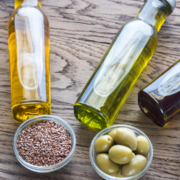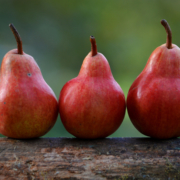Inflammation … Friend or Foe?
We’ve all experienced wounds of varying sizes. Think back to a recent wound – the event that caused it, the pain and probably blood. Within a few hours the spot was tender, red and swollen; yet that subsided after a short time as a scab developed and healing began.
That tender redness was the result of inflammation at the site – your body’s process of “mustering in the troops” to fight off germs and support the healing process. It is a normal process for our bodies, whether you actually see the wound on the outside or not.
Inflammation is necessary to protect and heal, but when it continues unchecked, it can begin to work against us.
Chronic inflammation – the term used when inflammation isn’t shut down – can indicate the body’s inability to respond to its irritant. Infections can jumpstart an inflammatory response, along with other sources of inflammation such as stress, unhealthy habits, and other underlying health issues.
Many of us stock over-the-counter medications that can help to control the discomfort of inflammation, but using these regularly comes with a price. [See my newsletter from August 29th]
The good news, though, is that there are natural remedies for inflammation. Filling your kitchen – and your plate – with anti-inflammatory foods will help combat your inflammation on a regular basis. These would include blueberries, strawberries, cherries, oranges, and pineapple; providing bromelain and quercetin which are incredibly helpful in easing inflammation in the body.
Other anti-inflammatory foods to stock …
Ginger – adding ginger to your routine can be quite simple … chop a few slices of fresh ginger root small and add it to your stir-fry meals, toss some slices in your juicer, or make some fresh ginger tea.
Green tea – swap out that afternoon coffee for a green tea to enjoy the natural anti-inflammatory benefits it provides. It’s better if you brew it to drink hot or cold, rather than buying the sweetened version in a bottle.
Beets – may get a bad rap, but they are oh so good for you. Filled with the betalain pigment along with countless other beneficial nutrients, beets provide anti-inflammatory and antioxidant properties that your body will love. Toss some grated beet on your salad or in your smoothie, or cube it to roast with other root veggies for a great side dish, and reap the benefits.
Tomatoes – contain lycopene which helps provide the body with an anti-inflammatory benefit. If your tomato plants are still producing, eat up! Otherwise you can find tomatoes at your local farmer’s market.
Garlic – garlic is so versatile and can be added to nearly everything. Take advantage of that and toss it in your home cooked meals to enjoy its anti-inflammatory benefits regularly. If you have inflamed joints, you can cut a garlic clove and rub it directly on the joint, letting the oils soak into your skin.
Not only are your food choices important, but sleep is another powerful element in reducing the risk of inflammation. If you’re in need of improving your sleep quality, take this as a sign to begin now. Sleep is such a crucial link in your overall well-being, not just in controlling inflammation. Making healthy lifestyle choices gives your body a better chance of curbing inflammation in the future, so start with baby steps.
What can you do this week to make healthier habits? Do you already have some of these foods in your kitchen? If so, plan now how you will incorporate them in your meals over the next few days. How well do you sleep? Check my blogs for tips to support better sleep. You will find an archive of these at www.PursueWellnessForYou.com/blog/
Not sure where to start to reduce inflammation and other causes of dis-ease in your body. Call me. We can talk for a few minutes about your struggles and how I can help you. You don’t have to go it alone!









Leave a Reply
Want to join the discussion?Feel free to contribute!